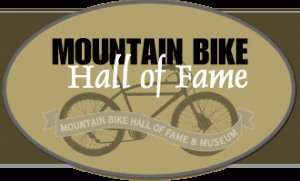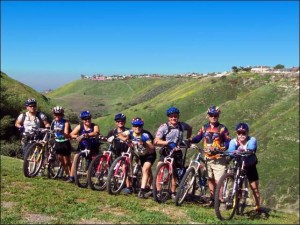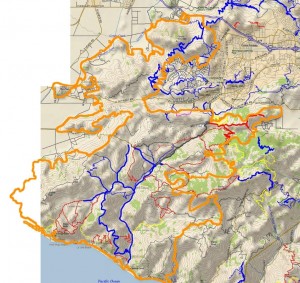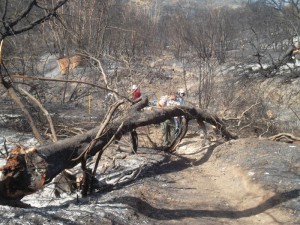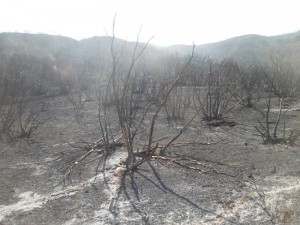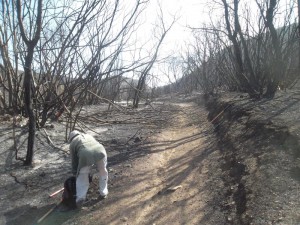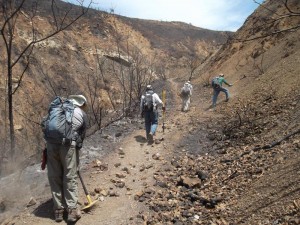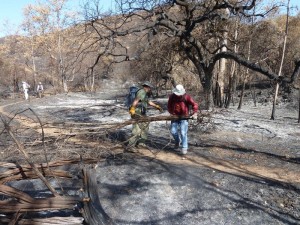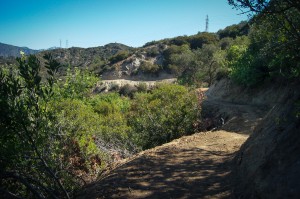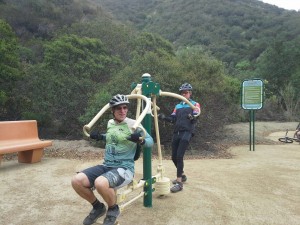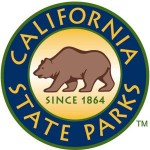 Last year, a disconcerting fact came to light. The California Public Resources Code, under which State Parks operate, contained a rule that essentially allowed bicycles on State Parks trails unless specifically closed to them. It also contained a rule that trails were closed to equestrians unless specifically opened to them.
Last year, a disconcerting fact came to light. The California Public Resources Code, under which State Parks operate, contained a rule that essentially allowed bicycles on State Parks trails unless specifically closed to them. It also contained a rule that trails were closed to equestrians unless specifically opened to them.
State Parks’ practice and policy for these past 25 years has been the exact opposite.
While considerable progress has been made by State Parks in acknowledging the legitimacy of bicycle use in State Parks at the policy level, in practice little has changed. CORBA has fought long and hard to gain more equitable access to trails in State Parks, and in fact, virtually all of the singletrack trails in the Santa Monica Mountains that are open to bicycles, are open either directly or indirectly, because of CORBA’s efforts.
Yet there is a rule currently on the books that, if followed, would have helped give us access to trails two decades ago.
State Parks held two private focus group meetings in October 2012, at which both CORBA and IMBA were represented, along with equestrians, hikers, and environmentalists. Those focus groups almost unanimously called for more inclusive rules that allowed both equestrians and cyclists access to trails unless specifically closed to them, despite the policy and practice in place.
Also discussed were rules regarding “minimum tool use” with the goal of only allowing use of only the minimum tools required to complete a task, in State Preserves (natural and cultural).
Fast forward nine months, and the proposed draft rules were released and public meetings were scheduled. One of the public meetings was scheduled AFTER the public comment period closed. The draft rules were the exact opposite of the consensus of the focus group meetings in which we participated.
We understand that due to the seriously flawed nature of this public rulemaking process, and the confusion resulting from these poorly drafted rules, that there will be another chance to comment on them. Details of the current drafts are available at http://www.parks.ca.gov/?page_id=27460
While this was not an issue that required a show of numbers by the public, even the limited public process involving stakeholder groups such as CORBA and IMBA was flawed. Our comments follow, and we’ll keep you informed when there are any further developments in the process.
————————————————————-
August 15, 2013
Alexandra Stehl, Statewide Trails Program Manager California Department of Parks and Recreation PO Box, 942896 Sacramento, CA 94296 Alexandra.Stehl@parks.ca.gov
Re: State Parks Proposed Rule Making Comments
Dear Ms. Stehl,
I am submitting these comments on behalf of the Concerned Off-Road Bicyclists Association (CORBA), a chapter of the International Mountain Bicycling Association (IMBA). We are a 501(c)(3) non-profit representing off-road cyclists in the Los Angeles and Ventura County region. We have been working closely with State Parks on trail-related issues since our founding in 1987. Our volunteer trail crews have contributed many thousands of hours of labor to trail maintenance efforts in State Parks. We serve as a bridge between land managers and the mountain biking community, educating and encouraging trail users on proper trail etiquette and responsible trail use, while at the same time advocating for protection of public lands and equitable access to the trails by which the public enjoys those resources for all trail users.
Having participated in the initial invitation-only focus group meetings conducted by Charlie Willard, we were initially dismayed to learn that State Parks policy of trails being “closed to bicycles unless specifically opened“ had been implemented in direct contradiction to the language of Title 14, division 3 of the Natural Resources Code. The policy of equestrians being permitted on trails unless specifically closed to them was also in direct contradiction to the code. We welcomed the opportunity to be a part of the process of rectifying this situation. The outcome of those focus group meetings appeared to be overwhelmingly in support of language that welcomes and includes equestrians, hikers and cyclists as trail users on State Parks trails. The proposed draft rules fail to meet that goal shared by the focus groups in both Southern California and Northern California, and appears to have completely ignored our input.
We therefore fully support and agree with the position taken by IMBA. We encourage State Parks to adopt the language submitted by IMBA for Title 14, Division 3 of the Natural Resources Code as follows:
§ 4360 – Trail Use
State park trails are open to non-motorized users including hikers, bicyclists, and equestrians unless otherwise designated. Trail use designations are established based upon user needs, visitor safety and environmental sustainability. This includes access to trails in Reserves and Preserves, as defined in PRC Sections 5019.65, 5019.71 and 5019.74, where particular emphasis will be placed upon importance of public access to the area, or desirability of providing important connections to other trails, provided impacts to special resources for which the area was established will be less than significant.
We put forward this language to replace existing provisions in the Natural Resources Code (§4359 and §4360). It will also include the provisions of proposed §4360.1, which we, and IMBA, urge be eliminated.
IMBA’s and others’ comments also include a background of State Parks policy and the policy’s contradiction to the existing code. CORBA has been at the forefront of these issues and we have played an ongoing part in that history and background. Despite more than two decades of gradual State Park policy changes to be more inclusive of cyclists, the rate of actual progress towards increasing trail access and opportunities for cyclists has been painstakingly slow and frustrating. This is an opportunity for State Parks to follow through on their stated goals of providing increased access for bicycles. The language proposed by State Parks would be a step backwards in this process.
There are many reasons for adoption of the above language, or even to retain the existing language of §4360, and change §4359 to include similar language to that for bicycles in §4360, allowing equestrian access to trails unless specifically closed to them. As a group we advocate for shared-use trails, and feel that the message sent by the proposed exclusionary and negative language sends the wrong message to State Park unit superintendents and managers, and sets the wrong example for other land management agencies who may be influenced by State Park rules and policy.
It also sends the wrong message to the public. The proposed language has the potential to further and compound perceived user conflict by giving one user group a sense of “superiority” over other user groups; it legitimizes and reinforces this perceived conflict, and discourages the sharing of multi-use trails. As outlined in the State Parks Trail Change In Use PEIR, Appendix A, even perceived conflict is rare, and actual incidents are rarer still. The language we are proposing will help promote a sense of community, sharing of trails, and is in line with State Parks’ stated goals of providing more trail opportunities to off-road cyclists.
Management practices exist to close specific trails to particular user groups where legitimate, objectively-determined concerns or environmental impacts are demonstrated. Therefore, adopting this more welcoming language will not have any immediate impact on existing trails, and where impacts are demonstrated, the means to close them is already in place. This should place no additional burden on State Parks, above that of the now-adopted Change-In-Use process. Further, a more uniform shared-use policy will be easier to manage and police than the current status quo.
Our proposed language is also in keeping with current research on trail and resource impacts by different “muscle-powered” user groups. It treats each user group equally, just as overall impacts to resources and trails by each of the major muscle-powered user groups have been demonstrated to be similar. It is now well-understood that the greatest impacts to trail and resource sustainability are the result of poor trail design, rather than any particular user group. The proposed language appears to ignore this fact.
With regards to the proposed changes to the “Minimal Tool Use” sections of Division 3 of Title 14, we are deeply troubled by the proposed lumping together of Preserves and State Wilderness. These are two distinct land-use designations (actually three if you include ‘cultural’; and ‘natural’ preserves) that require distinct, but at times overlapping, approaches to management. The term “mechanical transport” as it applies to State Wilderness is NOT applicable to Preserves as proposed. The unintended consequences could be daunting, with significant impacts to cyclists and the mobility-impaired as user groups. While the concept and goal of “minimum tool use” is appropriate for both natural preserves and state wilderness, the proposed language can too easily be misinterpreted. We have been informed that State Parks does not wish to summarily exclude cyclists from Preserves, yet the proposed language does just that. We urge State Parks to either retain the existing sections §4351 and §4351.1, or to prepare language that avoids misinterpretation and unintended consequences.
Given the haphazardly drafted proposed rules, and numerous problems with the process–including scheduling public meetings AFTER the public comment period closes–we can only surmise that the draft rules were preordained prior to any public process and were put together with complete disregard to public input. The public and private meetings seem to have been held only to placate the public, not to seek actual input. We therefore urge State Parks to continue the public process appropriately and professionally, and allow for another round of public comments on the revisions that come out of this comment period.
Thank you for consideration of our comments. If you have any questions, feel free to contact us.


